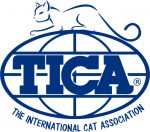The Ragdoll Breed
The Ragdoll is a relaxed, happy cat and, like a child’s ragdoll, many of these cats will go limp in your arms and flop like a stuffed doll when cuddled. Generally, the Ragdoll is a loving, quiet cat with a laidback disposition, but also always willing for some level of play. They are often compared to dogs due to their friendliness and intelligence, they can be taught to play fetch.
Ragdolls were developed in the 1960’s by Ann Baker; a breeder in Riverside California. The origin of the Ragdoll breed consisted almost entirely of free-roaming cats. Ann bred Josephine, a domestic longhaired white female that was found running loose in her neighborhood, to other cats she owned or found. The offspring of this female had unique temperament traits that were very endearing. By selecting individuals with the look, temperament and criteria she wanted for her breeding program, she created the Ragdoll breed.
Ragdolls are slow-maturing, reaching full coat color at two years, and full size and weight at four. The Ragdoll is a pointed breed, which means that the body is lighter in color than the points (the face, legs, tail and ears). They are carefully bred to produce large affectionate animals in three patterns, two with white (mitted and bi-color) and one with no white (colorpoint).
The Ragdoll name comes from their tendency to go completely floppy and limp when you hold them. If you love cuddling and being close to your animals then the Ragdoll breed may be the cat for you as they will reciprocate your attention with enthusiastic affection. the Ragdoll gets along well with children and other pets, including dogs, often living up to its name as it gets carried around the house in a child’s arms. These sturdy cats have no extreme features and blend easily into the busy modern household.
Children will be safe around the ragdoll as they are playful but not aggressive – in fact, they usually play without extending their claws. Their gentle nature means they are strictly an indoor cat as they have retained no instinct for either fight or flight, and as such have lost the ability to defend themselves.
Colors & Patterns
To describe a Ragdoll, combine the color and pattern names. For example, a seal Ragdoll, depending on the pattern, might be a “seal color point,” “seal mitted,” or “seal bi-color.”
Patterns
COLORPOINT- Have dark points (ears, tail, face, and feet) with just one color on the body of a lighter shade. The nose leather and paw-pads match the point color. Color points do not have white markings (although the pale body color may appear white on some cats).
MITTED – Have dark points and lighter body like a color point, but also has white “mittens” on the front paws, white “boots” on the back legs and feet, a white chin, a white strip on the stomach, and a white ruff.
BI-COLOR – Have the dark points (ears and tail), but the mask is interrupted by an inverted “V” running between the eyes and expanding into the muzzle. The body color forms a “saddle” on the cat’s back and the remainder of the cat is white. Bi-colors have pink nose leather and paw-pads.
TORTIE – Tortie Ragdolls are similar to calico patterns seen in domestic short hairs. Ragdolls don’t often show as pronounced variety of colors in their tortie coat. Tortie Ragdolls are always female.
BLAZE – A Ragdoll coat will sometimes be defined as “with blaze”. A blaze is a white line or spot on the face. This is described with mitted Ragdolls. This spot is often in the shape of an hourglass following the bridge of the nose.
LYNX – A lynx pattern in Ragdolls is very similar to tabby markings – a classic “M” outline on the forehead and stripe patterns on the legs. This is most often seen as a complement to pointed Ragdolls.
Colors
There are many Ragdoll color combinations as illustrated in this chart. Below is a simplified list of the traditional colors we may have at Coppermine Ragdolls.
SEAL – Have very dark brown, almost black colored points with a light tan body color.
BLUE – (SEAL dilute) Have dark blue-grey points with a pale grey body color.
CHOCOLATE – Have milk chocolate points with an ivory body color.
LILAC – (CHOCOLATE dilute) Have pinkish/mauve/grey points with a frosty white body color.
MINK & SEPIA – are darker versions of the traditional colors. They are easily distinguished at birth because they are born a creamy brown or soft grey that darkens over time.
EYE COLOR – The eye colors that Coppermine Ragdolls has are Blue, Aqua, or Odd-Eyed (having one blue eye and one aqua eye)



